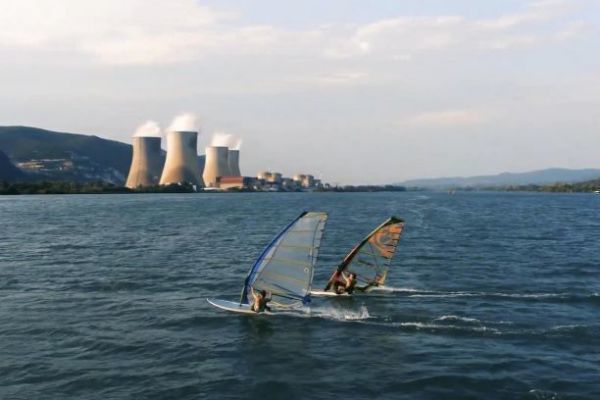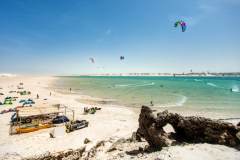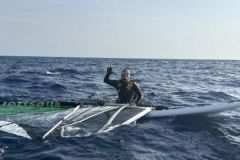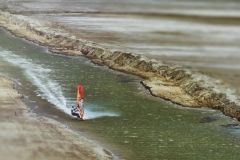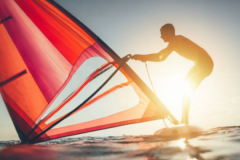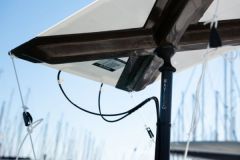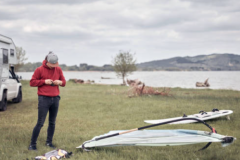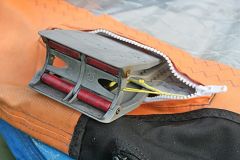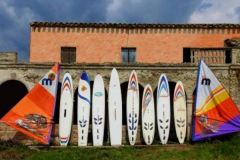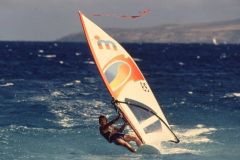The sometimes turbulent waters of the Rhône provide ideal sailing conditions. Denis, Tom and Simon, three windsurfing enthusiasts, have accumulated years of experience on the Cruas nautical site. They share their experience and give advice to those wishing to try river windsurfing.
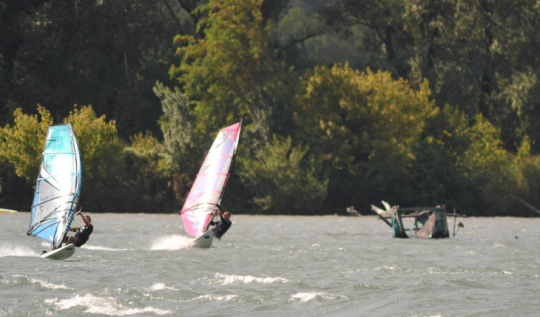
pouico Voilovic
Tell us about your introduction to windsurfing. What motivated you to try this sport on the Rhône?
Denis : My first time windsurfing was in July 1986, on Lac de Champos, in the northern Drôme region, close to where I worked at the time. I was introduced to windsurfing by an army buddy who had taught me on Lake Annecy in 1985. From that first experience, I fell head over heels in love with windsurfing. I was drawn to the Rhône, the need to sail in strong winds, to experience more sensations and to get up to speed quickly. That's what prompted me to apply for a job at the Cruas-Meysse nuclear power plant, so that I could go funboarding as often as possible, and even every day if necessary! Since then, I've never wanted to leave Cruas and Montélimar, as the Rhône is only a fifteen-minute drive away.
In 2001, I discovered kitesurfing. Over the years, starting in 2004, I gradually replaced windsurfing on the Rhône with kitesurfing. Since 2019, I've devoted myself exclusively to wingfoil. As soon as there's a gust of wind, I try to get out on the Rhône, and I still sail the river with the same passion as when I started windsurfing in 1986!
I started dockstarting from the ASGE DA Voile pontoons, but given my age and having lost a lot of flexibility, I have to admit that progress is really hard for me. However, with the evolution of equipment and foils, I don't despair of getting there!
Tom: I started dinghy sailing at the age of 8, in 2001, on the Rhône. Later, when I wanted to take a multi-support BPJEPS sailing diploma, I was forced to turn to windsurfing. Around 2016-2017, I took up the sport on the Rhône. At the club, we only had an introductory board, the Bic Beach, and some heavy old sails. As a result, the first few times were very complicated, with the usual mistral wind and strong current: sessions of galley, spending more than half my time in the water, wondering what I was doing there.
When I became more confident, I used the club's Bic Veloce and Fanatic Ultra-Cat boards, which are less stable but more playful.
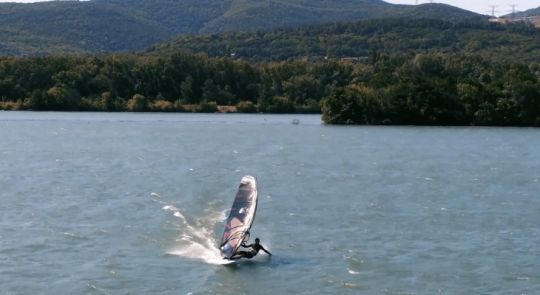
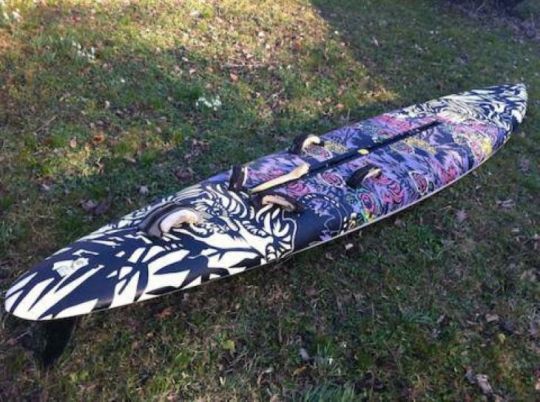
I had a lot of fun on these boards, but the heavy sails, which weighed like a dead donkey, made my sessions very painful and short. Then I got into funboarding, acquiring a Tabou Bullit and a few lighter 4 and 5.3 m2 wave and freeride sails. That's when I really started to enjoy windsurfing.
Simon: I discovered windsurfing through ASGE DA Voile at the age of 12, during a sailing course. The instructors, Denis and Seb, would take us to the L-shaped dike, a little further downstream from the club. We set off every morning by tractor with a trailer and the sailboards to reach the dike. The idea was to take shelter from the strong flow of the Rhône and avoid drifting as far as the hydraulic dam, which represents a real danger.
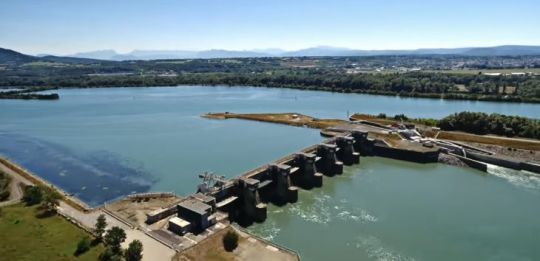
At first, this sport seemed thankless to me, as each movement required a lot of repetition to learn. With perseverance, I came to understand that you don't have to force yourself to feel the sensation of planning. Once I'd mastered the technique, I was able to put aside the unappealing aspects of the Rhône, i.e. the murky water, the algae and mud, the presence of catfish and the strong flow. For me, Nuclear Beach, as it's known, will always be my best spot.
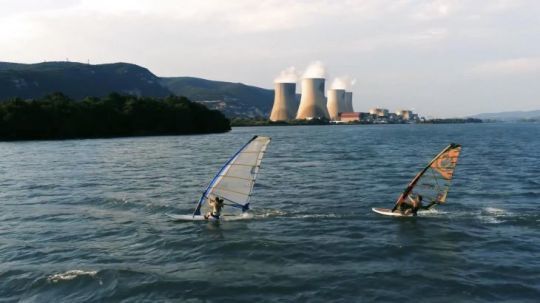
In your experience, what are the best conditions for windsurfing on the Rhône?
Denis : The most stimulating times for windsurfing on the Rhône are when the Mistral and southerly winds are strong. That's when a chop forms that's ideal for jumping.
Tom: There are several spots on the Rhône, and I don't know them all, but at Cruas, the best conditions are when there's a Mistral wind. When the wind comes from the south, it's far too irregular. As far as wind strength is concerned, there's no such thing as the best conditions, it all depends on the sailing schedule. On the other hand, you absolutely mustn't go out if the wind is too light, because with the current, you run the risk of having to walk back up! At Portes-les-Valence, it's exactly the opposite: it's better to go out when the wind is coming from the south, as it's steadier. In terms of wind strength, we're well off on the Rhône, as it blows often, and sometimes very hard.
Simon: When the wind comes from the south and goes against the flow, it creates a strong chop that raises ramps for windsurfing! However, strong southerly winds are very rare, as the prevailing wind is the Mistral from the north, blowing southwards in the same direction as the flow of the Rhône. This makes the water flatter and allows you to practice another of windsurfing's fun disciplines: slalom.
Describe the ideal equipment for navigating the Rhône.
Denis : For my 70 kg frame, I prefer an 80-85 liter freeride board, suitable for 90% of my sessions with winds of 15-20 knots or more. For the remaining 10% of my sessions in lighter winds, I opt for a 110-120-liter board. My sails range from 3.5 m2 to 6.5 m2, preferably without cambers.
Tom: It's a relatively flat and windy stretch of water, so it's best to use freeride or slalom equipment to have fun. It would probably also be suitable for freestyle, but I'm not familiar with this discipline. To be confirmed by amateurs.
Simon: There's no such thing as ideal equipment, but rather a necessary adaptation to variable conditions. I had a Fanatic Falcon Formula with an 8.5 m2 sail to sail in a minimum of 12 knots.

I've also been using a 90-liter RRD X Fire for slalom with cambers sails of various sizes, and for days when the Rhône is rougher, Patrick, a friend of the club, gave me his 90-liter wave board made by a professional in the 90s, on which I rig small wave sails, from 4.5 m2 to 5.3 m2.
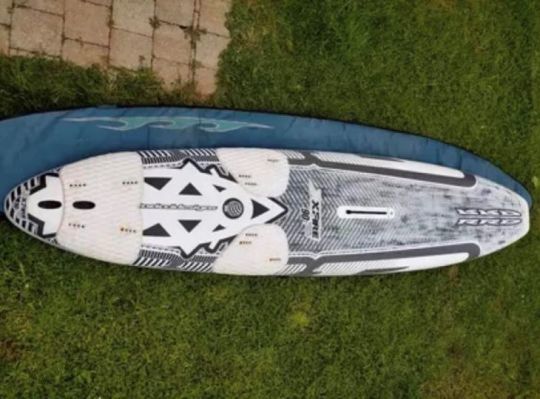
Do you think the Rhône is a good place to improve your performance?
Denis : Absolutely, especially to perfect your jibes and turns, given the river's current and narrow width, requiring responsive turns even on 80-litre floats, with the need to get upwind quickly.
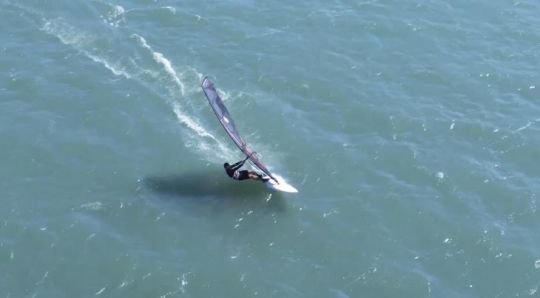
Tom: I think you can improve your performance on any spot, it's up to you and your desire to progress. The advantage of the Rhône is that there are often strong winds, which means there are plenty of good sailing sessions. Consistency is one of the main keys to progress. On the Rhône, the management of currents, sometimes disturbing if not dangerous, offers an opportunity for improvement. Finally, as this is a sport in which confrontation is important to progress, it's worth navigating on the Rhône because there are some good riders with whom you can "shoot the breeze".
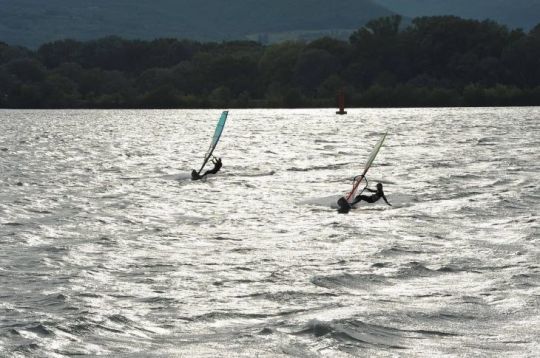
Simon: The Rhône offers ideal conditions, as it combines several criteria for improvement, such as flow, combined with sea currents, winds of up to 50 knots, and a maximum width of 800 meters. This configuration allows intensive training on jibes and other maneuvers, thanks to short tacks. What's more, the presence of the PWA (Pierrelatte Windsurf Association) who train at the club underlines the optimal conditions for competition.
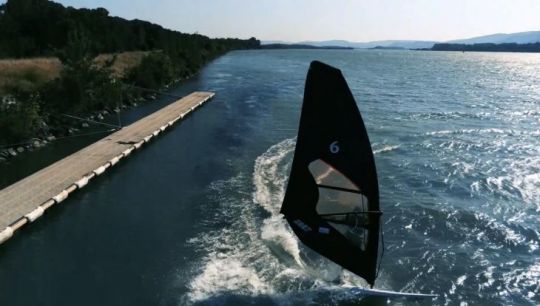
What advice would you give to novices wanting to try river windsurfing?
Denis : Don't hesitate to take the plunge, to overcome the fear of sailing close to barges and currents. Even if you're sailing alone, and even if you start out drifting and have to walk barefoot up the bank through the mud and seaweed!
Tom: Always check the weather forecast before going out, as well as the strength of the current. Never go out if the current is too strong! Wear a good wetsuit. Don't go out alone. If possible, have a safety device in case of strong currents. Be patient and courageous, and don't get discouraged during the first few sessions. Don't drink the cup, otherwise you risk discomfort!
Simon: Never sail alone. It's always best to sail in a group, because there's always a danger lurking, whether it's the frequent passage of barges on the river or the presence of Canadair aircraft during the summer. Denis can testify to one such mishap! The best thing to do is get in touch with the sailing clubs or windsurfing associations on the Rhône. As a windsurfer, you shouldn't neglect your safety equipment: lifejacket, helmet, neoprene shoes, wetsuit and harness. A little extra would be a waterproof telephone.
Whether you're a beginner or an experienced windsurfer, the Rhône offers a dynamic and demanding environment in which to acquire skills and constantly improve your performance. Wind conditions and current features add an enriching dimension to the experience, underlining the need to approach the sport with caution.
